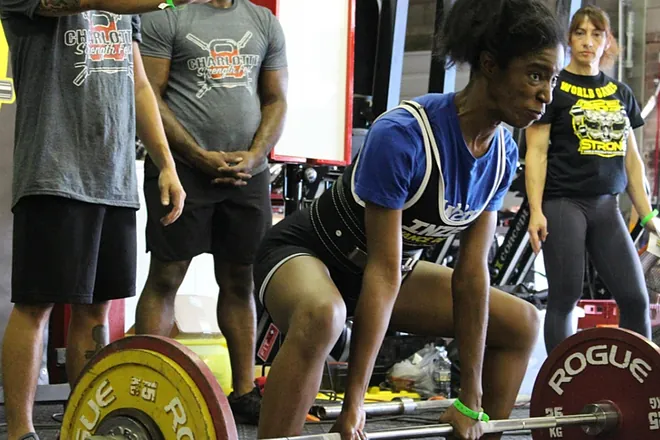Crunches are a go-to exercise for core strengthening, but when done incorrectly, they can wreak havoc on your lower back. The primary culprit? Lifting the lower back off the floor during the movement. This mistake shifts tension from the abdominal muscles to the spine, causing unnecessary compression and increasing the risk of pain or injury. Below, we’ll break down this error, other common mistakes, and how to perform crunches safely to protect your lower back while maximizing core activation.

Why Lifting the Lower Back Hurts
When you lift your lower back off the mat during a crunch, you disrupt the natural alignment of your spine. This creates excessive pressure on the vertebrae, which can lead to:
- Spinal compression: The vertebrae in your lower back bear the brunt of the movement, increasing the risk of discomfort or injury.
- Muscle imbalances: The abdominal muscles are underutilized, while the lower back overcompensates, leading to strain.
- Chronic pain: Repeatedly performing crunches with poor form can contribute to long-term lower back issues.
Other Common Crunch Mistakes
In addition to lifting the lower back, several other errors can compromise your spine health and reduce the effectiveness of crunches:
- Arching the back excessively: Over-arching during the upward motion shifts tension to the lower back instead of engaging the abdominal muscles.
- Lifting the torso too high: Raising your shoulders beyond the shoulder blades puts undue stress on the spine. A full sit-up isn’t necessary for core activation.
- Using hands or legs for momentum: Pulling on your neck or swinging your legs reduces abdominal engagement and strains the neck and lower back.
- Overdoing repetitions with poor form: Performing too many crunches with bad technique amplifies the risk of injury. Quality over quantity is key.
How to Perform Crunches Safely
To avoid lower back pain and maximize the benefits of crunches, follow these step-by-step recommendations for proper form:
- Keep the lower back grounded:
- Lie flat on a mat with your knees bent and feet flat on the floor.
- Place your hand under your lower back to ensure it stays in contact with the mat throughout the movement.
- If you feel a gap forming, adjust your position to keep the lower back pressed down.
- Engage the core:
- Before starting the crunch, tighten your abdominal muscles as if bracing for a punch.
- Focus on contracting the abs to lift your shoulders, not your back or neck.
- Limit the range of motion:
- Lift your shoulders only to the height of your shoulder blades (about 30–45 degrees off the mat).
- Avoid trying to sit up fully, as this engages the hip flexors and stresses the lower back.
- Control the movement:
- Perform crunches slowly and deliberately, avoiding jerky motions.
- Exhale as you lift and inhale as you lower to maintain core control.
- Position hands correctly:
- Place your hands lightly behind your head or across your chest to avoid pulling on your neck.
- Keep elbows wide and avoid tucking your chin to prevent cervical strain.
- Check your form regularly:
- Use a mirror or record yourself to ensure your lower back stays flat and your movements are controlled.
Safer Alternatives to Crunches
If crunches still cause lower back discomfort despite proper form, consider these safer core exercises that minimize spinal stress while effectively targeting the abdominal muscles:
- Front Plank:
- How to: Rest on your forearms and toes, keeping your body in a straight line. Hold for 20–60 seconds.
- Why it works: Strengthens the entire core without spinal compression.
- Side Plank:
- How to: Lie on one side, propped up on your forearm, and lift your hips to form a straight line. Hold for 20–60 seconds per side.
- Why it works: Targets obliques and deep core muscles with minimal back strain.
- Abdominal Wheel Rollout:
- How to: Kneel and roll an ab wheel forward while keeping your core tight, then roll back.
- Why it works: Engages the abs deeply while maintaining a neutral spine.
- Bird Dog:
- How to: From a tabletop position, extend one arm and the opposite leg, holding briefly before switching sides.
- Why it works: Improves core stability and strengthens the lower back safely.
Tips to Enhance Core Workouts and Protect Your Back
To build a strong core while minimizing the risk of lower back injury, incorporate these practical strategies:
- Prioritize quality over quantity: Perform fewer reps with perfect form rather than rushing through high repetitions.
- Warm up properly: Do dynamic stretches or light cardio to prepare your core and back muscles.
- Strengthen supporting muscles: Include exercises like glute bridges or deadlifts to support overall spinal stability.
- Listen to your body: If you feel pain (not just muscle fatigue) in your lower back, stop immediately and reassess your form or switch to an alternative exercise.
- Consult a professional: Work with a certified trainer or physical therapist to ensure proper technique, especially if you have a history of lower back issues.
Why a Strong Core Matters
A strong core does more than just improve your physique. It plays a critical role in:
- Posture improvement: A strong core supports proper spinal alignment, reducing slouching and back pain.
- Injury prevention: Core stability protects the spine during daily activities and other exercises.
- Enhanced performance: A strong core improves balance and power in sports and functional movements.
By focusing on proper form and incorporating safer exercises, you can build a resilient core without risking lower back pain.
The most common mistake when doing crunches—lifting the lower back off the floor—can lead to spinal compression and chronic discomfort. By keeping your lower back grounded, controlling your movements, and prioritizing core engagement, you can perform crunches safely. If discomfort persists, switch to alternatives like planks or ab wheel rollouts to strengthen your core without compromising your spine health. Always focus on quality over quantity and listen to your body to prevent injury and achieve long-term fitness goals.






